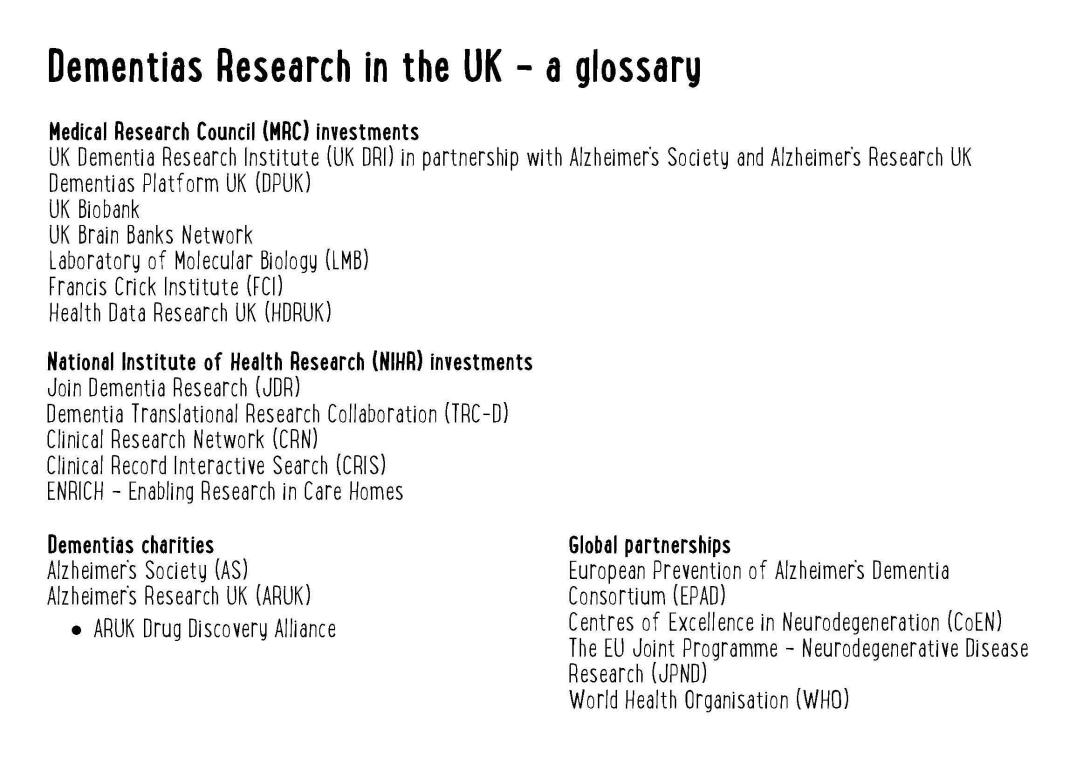The MRC, one of the UK DRI's funders, joined forces with the National Institute for Health Research (NIHR) to create a picture of the dementia research ‘landscape’ in the UK, made up of people working together for a better future for people with dementia. Catherine Moody, MRC Programme Manager for dementias initiatives, explains what we can see.
The dementias research landscape in the UK can look pretty complicated to those not directly involved in dementias research. It can even look bewildering to those who are!
But as our new picture shows, the jigsaw pieces do fit together. And without any one of the pieces, the picture isn’t complete.
Our ambition to defeat dementias will only happen if researchers from different disciplines join forces and make a big push to carry out a diverse programme of research. In the UK, we now have excellent infrastructure which brings researchers from many areas together to realise that same goal: better treatments for people with dementias.
We wanted to bring all of the different characters that are central to dementias research in the UK together into a coherent picture.
A rich picture
After some brainstorming sessions, the neurodegenerative disease research programme team at the MRC, together with our colleagues at the NIHR, quickly realised that a simple diagram, like an organogram, just wouldn’t cut it.
So we worked with a graphic designer to produce this ‘rich picture’. Our aim was to stimulate conversation about dementia research rather than being prescriptive.
Working with our charity partners, it soon became clear that a jigsaw was an excellent metaphor: we all play a part towards completing the dementias picture.
The four hills in the background represent the main contributors: charities, public funding, industry and international partnerships.
Working together
But the focus of action is in the centre, where the research is taking place. For example, we’ve shown the new £250m UK Dementia Research Institute, that will bring a step change in understanding the basic science behind dementias. You can also see the Translational Research Collaboration in Dementia, which offers a platform for future clinical trials of new dementia therapeutics.
Supporting this research are world-leading facilities such as the UK brain bank and biobank networks, which provide valuable samples for research, and the Dementias Platform UK – the world’s largest study group for use in dementias research.
But without patient commitment and involvement none of our research would be possible. That’s where the hospitals come in, together with key initiatives such as the NIHR’s ‘Join Dementia Research’ and the Clinical Research Network. These initiatives play vital roles in patient recruitment to the studies that we hope will one day lead to new and better treatments.
Filling the gaps
This project showed us really clearly that if there are any gaps in the research landscape, it’s by working together that we can invest to fill those gaps. It’s critical that our researchers have what they need to develop the treatments for tomorrow. It’s about collaboration, not just between research teams but of course between funders too.
And what you see towards the right of the picture is what we’re all striving for: more effective treatments, better care for patients, improved diagnostics and symptom management together with new insights into prevention.
The illustration shows what a great place the UK is for researching the causes and treatments of dementias. It really is a rich picture.
is key

